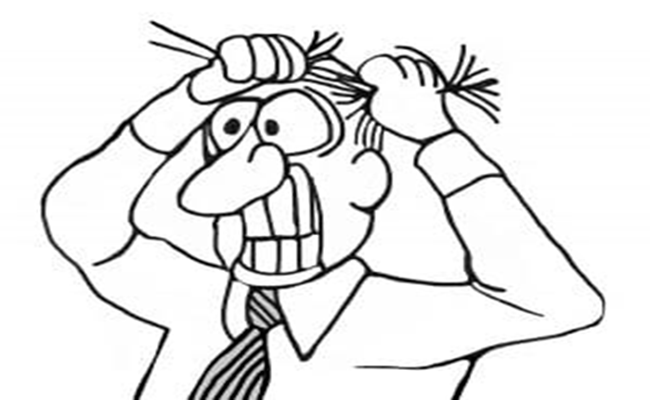Your cart is currently empty!

My Life Is A Hair Pulling Experience!

“Truth is I cut my hair for freedom, not for beauty.” ~Chrisette Michele
 When I was about 13 years old — 27 or so years ago — I decided to grow a ponytail.
When I was about 13 years old — 27 or so years ago — I decided to grow a ponytail.
Before that, my parents chose my hair style and kept it short. At the time, I just wanted to look like my 80s hair band heroes. I didn’t expect the decision to grow my hair out would expose the very first noticeable symptom of mental illness.
But that’s exactly what happened. As my hair grew longer and longer, I began “playing with it,” as my family would say. As I grew older, the “playing” got more aggressive, more frequent, and more noticeable.
Even though it was obvious that I was twisting, pulling, and ripping my hair out, it was not obvious that this was an illness. Thinking this was just a bad habit, my family would yell at me — and, in some cases, punish me — to try to get me to stop.
What does Trichotillomania (Hair Pulling) Look Like?
Trichotillomania (hair pulling) is primarily characterized by the recurrent pulling out, or twisting, of one’s own hair. Hair pulling may occur in any region of the body — such as your scalp, chest, or pubic area.
In my case, the pulling has been mostly limited to my scalp. When my hair is long enough that I can place a tuft between my thumb and index finger, I start to twirl. I just twist the hair in little knots. As time goes on, the knots become tighter and I have to rake at my hair to pull it free.
The constant twirling, knotting, and tugging causes hair to fall out and, if this goes on long enough, I develop bald patches on the top of my head.
I cannot control this impulse. I’ve sat in job interviews yanking on my hair while talking to hiring managers. I’ve pulled out clumps while in professional meetings, and I’ve even caused my scalp to bleed — and continued to twirl, in spite of the pain.
All my life, people have reacted to this habit by looking at me as if I’m crazy. They express worry, concern, and sometimes outright anger at why I would behave this way in public. When I was a teenager, I lived with my grandparents, and my grandfather used to leave the room when I would start to twirl. He said it was too distracting and I needed to stop.
Make no mistake; I tried. I’d sit on my hands, wear a hat, and even rub hair gel into my head to form a hair helmet. Nevertheless, I’d always find a way to grab, hold, and twist. Nothing I did worked to stop the twisting, pulling, and yanking until I shaved my head bald.
How I Defeated Trichotillomania (Hair Pulling)
I am a redhead and people with red hair, in general, really love their hair — even men. Even if someone doesn’t remember what I said, they remember my red hair. I loved having long hair because that meant more red. So when I say I came home in a frustrated, agitated, and angry state and asked my wife to shave my head, I can only imagine what I looked like through her eyes.
Earlier that day, while at work, I had pulled a clump of my hair out and it grossed out my co-worker. She made a big deal about it and told me to get help. She was disgusted and didn’t hold back. My supervisor told me to see the on-site nurse and, in short, I was embarrassed.
I still didn’t know that the reason I was playing with my hair had anything to do with mental illness. I thought it was a moral failing on my part. I decided that I didn’t deserve hair, since I couldn’t take care of it.
That evening, my head was shaved completely bald. No hair, whatsoever. And that worked. Having no hair to twirl meant that when I reached up, I’d find nothing to grab onto, and the compulsion receded.
In the years since, I found out how lucky I was that this worked. After being diagnosed with bipolar and anxiety, I’ve learned a lot about my various conditions — trichotillomania being a prominent one. And, while I no longer keep my head bald, I do keep my hair cut very short. If it gets too long, like in the video below, I’ll start twirling, again.
Education Is Needed
To this day, I think my hair twirling is a commentary on the lack of mental health education in this country. My entire family, all my friends, and even strangers watched me pull out my own hair and no one knew to recommend that I see a doctor. They were all quick to blame me for being bad, rather than consider that something more could be at the root of my hair pulling.
If the people around me didn’t realize that literally pulling my hair out was a medical issue — and I was in need of help, not scorn — then it shows just how much more mental health education our society needs.
This article originally appeared on Psych Central as, My Life with Trichotillomania (Hair Pulling)
